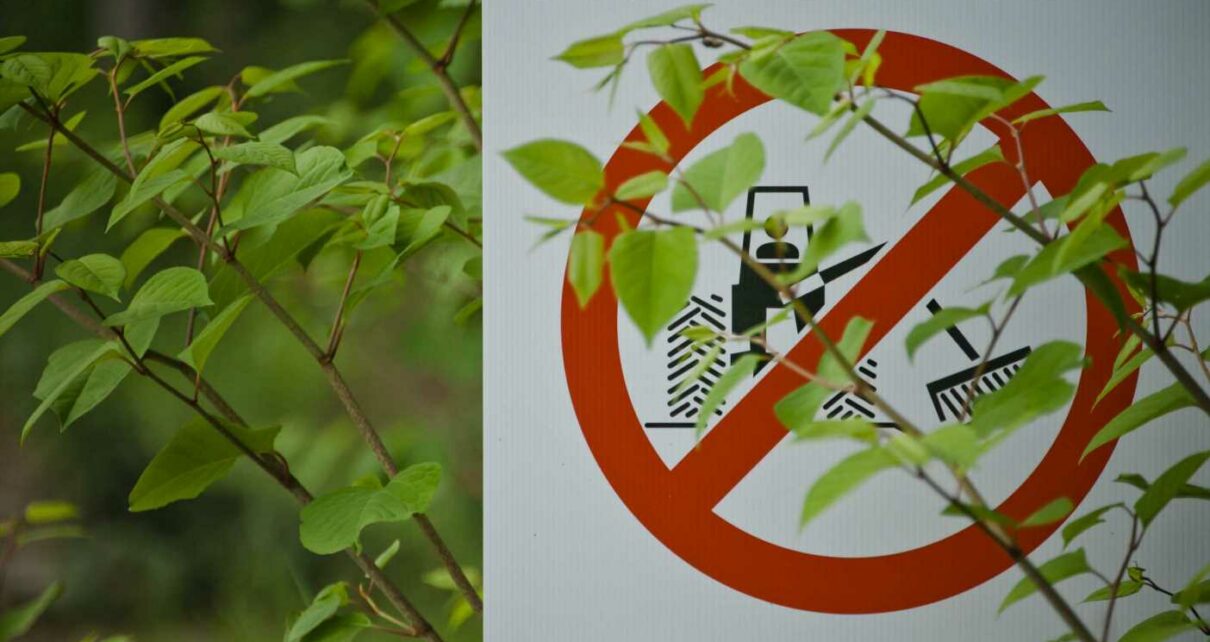A HOME expert has revealed the plants that could majorly damage properties or have a negative impact on them.
And, contrary to popular belief, it’s not just Japanese Knotweed we should be careful of in the garden.

Instead, Chris Ross, who is the director of company Direct Building Products has revealed three other plants that can cause “the most damage” to a home’s structure.
And he went as far as saying that, depending on property size, some plants can cause problems that would cost between £7,500 to £9,500 to be fixed.
But luckily Chris is on hand to not only lift the lid on the problem areas to look out for, but also how green-fingered gardeners can eradicate the issue before it has begun.
Plus, he said what to do if the plants have already started to wreak their havoc…
Read More in Gardening

DIY 3-ingredient weed killer works within the hour – and it’s cheap

Gardeners rave about 12p hack to stop slugs munching plants – but it stinks
IVY

The home expert explained that Ivy is one of the plants that we must pay careful attention to, as it can lead to various problems.
He said: “Ivy can be a feature on your home all year round and could be creating cracks in your structure, allowing damp to leak through.
“Due to its strong attachment to walls, ivy can be a worry to some homeowners, as it may damage wall surfaces or block drains and gutters.
“With a survey and repot, alongside the physical removal of ivy, the price can cost around £600.”
Most read in Fabulous

William & Kate hooked on padel tennis & play competitive matches with pals

Mum raves about a £16 nightie that you can easily style as a dress too

I tried M&S & H&M’s almost identical trousers & there was a clear winner

People are just discovering what the extra section in shopping trolleys is for
He added to the Express that “the worst case scenario of property damage” could see costs rising to as much as £10k – so it’s important to take action early and hand pull or uproot the area the Ivy is spreading in.
Chris explained: “Although this can be time-consuming, this method will result in the least amount of regrowth.
“In areas more thicker than others, try raking the ivy to uproot them, or, if you have ivy on your walls, cut the ivy at the stems to cause the plant to dry out.”
He also recommended white vinegar as an alternative, telling gardeners to spray vinegar, salt and soap onto the leaves and let the solution work its magic.
CAMPSIS

The plant, which has often been referred to as Campsis, also known as ‘trumpet vine,’ is not something you want to see near your home.
The “extremely fast spreading invasive plant” costs around £210 per load or £52 per hour to remove.
The expert added: “Again, added to any possible damage to your properties' structure, your total price could be around £9,710 if not properly maintained.”
So how do you get rid of it before it causes any trouble? It’s as simple as boiling some water.
Chris concludes: “Boiling water can be used as a herbicide to treat trumpet vine in a low-cost, efficient and natural approach.
“First, cut the vine at the ground level, then boil some water over the base.”
HORSETAIL

The British weed that is rife in spring and summer is often seen sneaking up through paved areas and concrete slabs.
Not only does it ruin the aesthetic but it could also cost homeowners about £380 to have it removed – a costly problem.
But there’s a way to ensure this doesn’t have to be the case.
Chris said: “Although horsetail growing near the surface can be forked out, deeper roots will require a lot more work, as occasional light weeding is not effective and can make the problem worse.”
Therefore, his company encourages people to use a good, strong weedkiller.
He added: “If horsetail appears in lawns, it can also be kept in check by mowing regularly.”
JAPANESE KNOTWEED

Some homeowners have had to find out the hard way how much of a nuisance Japanese Knotweed can be – but what does it do and how can you get rid of it?
The pro explained: “The massive root system of Japanese knotweed utilities weaknesses in building foundations and connecting drainage systems, and causes gradual damage, resulting in a faulty structure over an extended period of time.”
Continuing to say that it could “cost you up to £40,000” for removal, or a further £9.5k for “structural damage repairs”,
However, there is a way to nip this in the bud.
This is to spray the stems with chemicals, although you usually need to pay an expert to ensure this is done correctly and efficiently.
Fabulous will pay for your exclusive stories. Just email: [email protected] and pop EXCLUSIVE in the subject line
Source: Read Full Article

